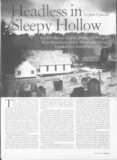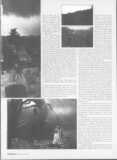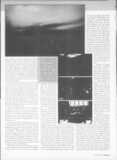


Though Rick Heinrichs has never before acted as production designer on a Tim Burton movie, his association with the director goes back to the short films Vincent and Frankenweenie, made at Walt Disney Studios in the early 80s. As visual consultant, he supervised the 3D stop-motion animation seen in early form on the shorts, and which came into flower on the Burton production The Nightmare Before Christmas, in 1993. He also served as animation effects supervisor on the director's feature debut, Pee-wee's Big Adventure; as visual effects consultant on Beetlejuice; as set designer on Edward Scissorhands; and art director on Batman Returns. Now, finally credited as production designer on Burton's upcoming Sleepy Hollow, Heinrichs has simply moved to another stage in his ongoing work with the director. He says the film, which Paramount Pictures will release November 19, is full expression of "what comes out between us: a graphic, two-dimensional sensibility, brought into three dimensions.'
Burton and Washington Irving's story The Legend of Sleepy Hollow are about as snug a fit as one can imagine. Set in 1799 in a custom-bound, upstate New York town of Dutch derivation, the tale has classic characters- Ichabod Crane, the Headless Horseman-tailor-made for the director's powers of eccentric realization. Who else to play the lopsided constable Crane but Johnny Depp, who had already essayed Edward Scissorhands and Ed Wood for the director? And how else to capture the particular feel of the title town, where a series of murders have allegedly been committed by a decapitated phantom rider, but on a highly controlled movie soundstage the proper setting, after all, for Burton's best work?
"In the beginning, Sleepy Hollow was going to be a lower-budget, $30 million film we were going to shoot in New York State and New York City," says Heinrichs, who launched into the film after a year spent working on Burton's aborted Superman project. "Various things then happened, having nothing to do with the design of the film, that pushed it to a different level. Apart from that, though, we realized as we were developing the look that it just begged for a hand-crafted feel. The historic locations in upstate New York were interesting but limiting for us they just weren't as expressive as we wanted. This wasn't a history lesson; we wanted to evoke an America that didn't quite exist, necessarily, but feels like it did. That channeled us into the groove of built sets, of a certain kind of lighting, of painted backings, and lots of fog and smoke. When you hit all of those things in a consistent way, with as much integrity in all the details as possible, you end up with a look that's imbued with an emotional content.'
[…]